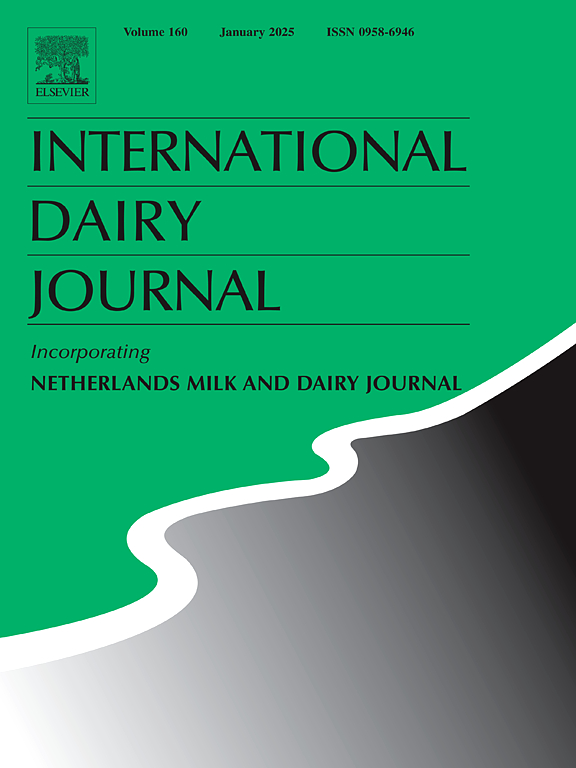中空纤维膜对脱脂牛奶的微滤:膜长、横流速度和过滤周期的影响
IF 3.4
3区 农林科学
Q2 FOOD SCIENCE & TECHNOLOGY
引用次数: 0
摘要
本文研究了10℃条件下中空纤维膜和反渗透水对浓缩和过滤过程中酪蛋白-血清蛋白的分离效率,以及膜长和横流速度的影响。膜组件长度对通量和透射率没有影响,由于酪蛋白组成的筛分层保持不变,通量随横流速度的增加而增加,对透射率没有影响。在0.5 bar跨膜压力下,体积缩小系数为2.5的滤过效果最好。由于血清蛋白的纯度受到损害,因此不希望在三个滤过周期以上进行进一步滤过。使用反渗透水作为滤过介质,虽然会引起浓度极化层的结构变化,但仍能获得较高的血清去除率。最后,本研究验证了中空纤维膜在以反渗透水为主要过滤介质的乳制品行业中是可以有效使用的。本文章由计算机程序翻译,如有差异,请以英文原文为准。
Microfiltration of skim milk using hollow fiber membranes: Impact of membrane length, crossflow velocity and diafiltration cycles
This paper investigates the casein - serum protein fractionation efficiency during both the concentration and diafiltration using hollow fiber membranes and reverse osmosis water at 10 °C and the effect of membrane length and crossflow velocity. Membrane module length had no effect on flux and transmission and flux increased with increasing crossflow velocity with no effect on transmission, as the sieving layer made up of casein remained unchanged. Diafiltration at volume reduction factor of 2.5 at 0.5 bar transmembrane pressure gave the highest serum removal. Further diafiltration above three diafiltration cycles is not desired as the purity of the serum protein gets compromised. Usage of reverse osmosis water as the diafiltration medium achieves high serum removal even though it induces structural changes of the concentration polarization layer. Finally, this study verifies that hollow fiber membranes can be used effectively in the dairy industry where reverse osmosis water is the main diafiltration medium.
求助全文
通过发布文献求助,成功后即可免费获取论文全文。
去求助
来源期刊

International Dairy Journal
工程技术-食品科技
CiteScore
6.50
自引率
9.70%
发文量
200
审稿时长
49 days
期刊介绍:
The International Dairy Journal publishes significant advancements in dairy science and technology in the form of research articles and critical reviews that are of relevance to the broader international dairy community. Within this scope, research on the science and technology of milk and dairy products and the nutritional and health aspects of dairy foods are included; the journal pays particular attention to applied research and its interface with the dairy industry.
The journal''s coverage includes the following, where directly applicable to dairy science and technology:
• Chemistry and physico-chemical properties of milk constituents
• Microbiology, food safety, enzymology, biotechnology
• Processing and engineering
• Emulsion science, food structure, and texture
• Raw material quality and effect on relevant products
• Flavour and off-flavour development
• Technological functionality and applications of dairy ingredients
• Sensory and consumer sciences
• Nutrition and substantiation of human health implications of milk components or dairy products
International Dairy Journal does not publish papers related to milk production, animal health and other aspects of on-farm milk production unless there is a clear relationship to dairy technology, human health or final product quality.
 求助内容:
求助内容: 应助结果提醒方式:
应助结果提醒方式:


